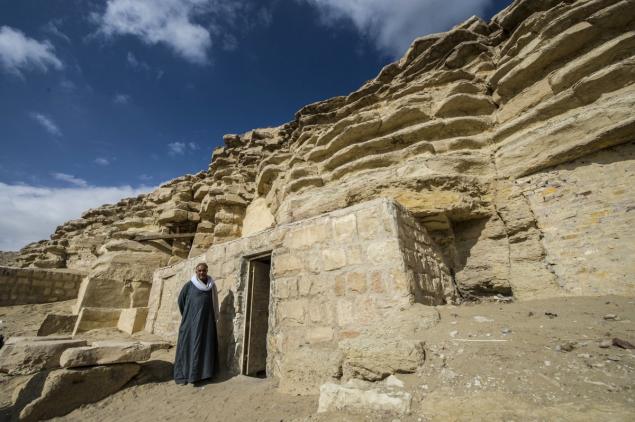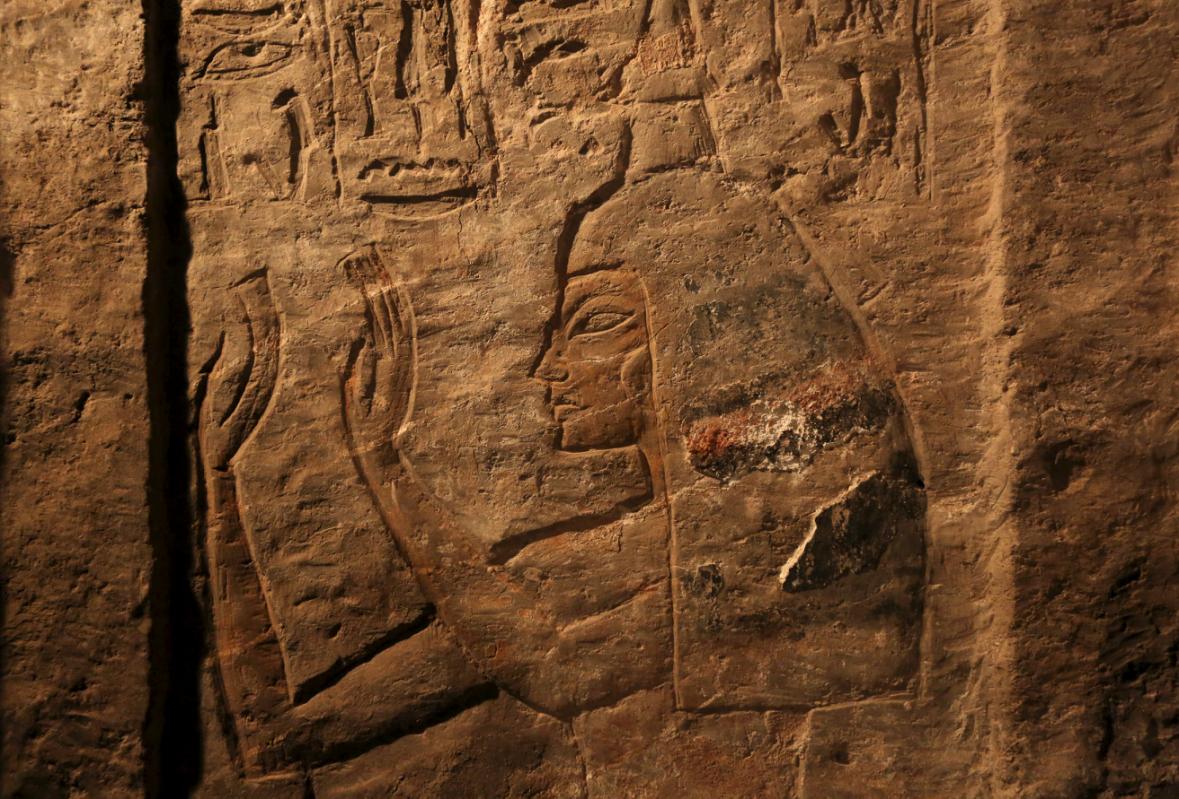Art World
A Glimpse Inside the Hidden Tomb of King Tut’s Wet Nurse
Could she have been a princess, too?

Could she have been a princess, too?

Sarah Cascone


Artwork in the newly-unveiling tomb of Tutankhamun’s wet nurse.
Photo: Mohamed Abd El Ghany.
For the first time since its discovery almost 20 years ago, the public has been allowed a glimpse inside the ancient Egyptian tomb of Maia, the wet nurse to King Tutankhamun, who breastfed the young royal as an infant, according to the Guardian.
The tomb, which was found in 1996, is located in Saqqara, a burial site for high-ranking member of Egyptian courts some 13 miles south of modern-day Cairo. It is richly decorated with paintings and engravings, with several mentions of King Tut. One image depicts the pharaoh as a child, sitting on Maia’s lap.

A man at the entrance to the tomb of King Tut’s wet nurse.
Photo: Khaled Desouki.
During the opening ceremony for the historic site, Egypt’s antiquities minister, Mamdouh el-Damaty, stressed the importance of the tomb, and noted that further analysis could “uncover more of Tutankhamun’s secrets.” He speculated that Maia might actually be Tut’s sister, based on another royal tomb that includes a relief of the princess breastfeeding a young boy.
French archaeologist Alain Zivie is a believer in this theory, telling the AFP that “Maia is none other than princess Meritaten, the sister or half-sister of Tutankhamun and the daughter of Akhenaten and Nefertiti.”

The tomb of King Tut’s wet nurse.
Photo: Khaled Desouki.
“The extraordinary thing is that they are very similar,” said Zivie of ancient depictions of Maia and the famed pharaoh. “They have the same chin, the eyes, the family traits.”
Archaeologists are also speculating that it may be Meritaten’s remains, not Nefertit’s, as has been previously posited, inside the secret chamber concealed within King Tut’s fabled tomb. The existence of such a chamber, which became the subject of much excitement this summer, has since been confirmed through tests conducted by the Egyptian government.
The boy-king’s tomb was discovered in 1922 by British archaeologist Howard Carter. Photographs taken at the time were recently restored in dazzling full color images.